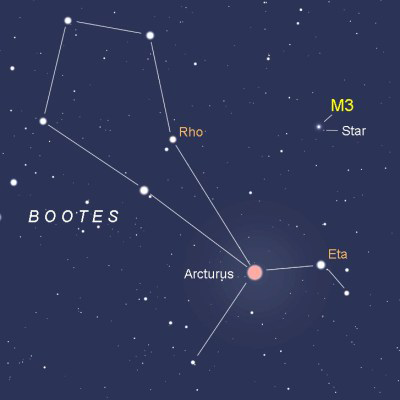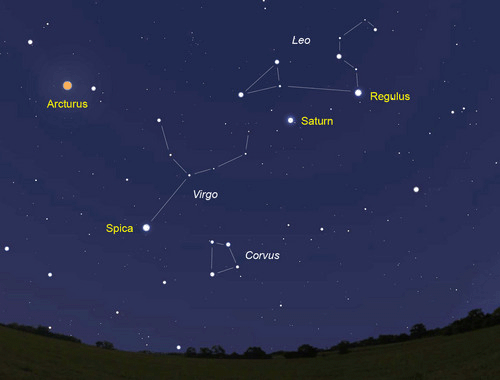Spring Constellations
Leo

Leo, also known as the lion, is another Zodiac constellations, represents those born from July 23 and August 22. Leo is very recognizable by the head of the lion, which looks like a backwards question mark, and is commonly known as “the sickle.” Regulus, Leo’s brightest star, is also easy to pick out in most lights. The constellation is best seen in April and May, but rises after the Spring Equinox in March.
Within the constellation, there are several spiral galaxies: M65, M66, M95, and M96. It is possible to fit M65 and M66 into the same view on a low powered telescope.
In Greek mythology, Leo was the Nemean lion, who was completely impervious to bronze, steel and any kind of metal. As part of his 12 labors, Hercules was charged to fight the lion and killed him by strangling him. Hercules took the lion’s pelt as a prize and Leo, the lion, was placed in the stars to commemorate their fight.
Boötes

Boötes, the herdsman, is recognizable by the bright star, Arcturus. Arcturus is a distinctly red star. During the 1933 Chicago World’s Fair, Arcturus’s light was used to open the exhibition.
The most unique celestial object in Boötes is, ironically, an area of emptiness, known as The Boötes Void. It is approximately 250 million light years long and contains very few galaxies. However, Boötes also contains a dwarf galaxy and a globular cluster, despite the void.
There are several myths associated with Bootes. In some interpretations, Boötes is the herdsman son of Callisto and Zeus, and is also represented as the Little Bear in the form of a bear. However, there is another legend that credits Boötes with the invention of the plow, and the goddess Demeter rewarded him by immortalizing him in the stars.
Virgo

Another Zodiac constellation, Virgo represents those born August 23 to September 22. Virgo is best seen in the late spring and early summer, usually May to June. The bright star Arcturus, in the constellation Boötes, lines up with the brightest star in Virgo, Spica, which makes it easy to find.
Within the constellation is the Virgo Galaxy Cluster, which is a conglomerate of thousands of unnamed galaxies. These galaxies are about 65 million light years away, and usually only appear as smudges in a telescope. Outside of the galaxy cluster is the Sombrero Galaxy, a disk galaxy that is about 28 million light years from the Milky Way.
Virgo, the maiden, is also known as Persephone, or the handmaiden of spring in Greek mythology. According to legend, Virgo was the daughter of the Demeter, goddess of the harvest. Hades, god of the Underworld, fell in love with Virgo and took her to the Underworld. Demeter was heartbroken and neglected her duties as the goddess of the harvest, causing all the plants to wilt and die. After the gods saw the state of the world and Demeter’s grief, they demanded that Virgo be returned to her. However, Virgo had already eaten pomegranate seeds, the food of the Underworld, and was bound to return to the Underworld for four months each year. During these four months of Virgo’s absence, Demeter’s grief still causes the plants again fall into decay, which was how the Greeks explained the changing seasons.
To read more about these constellations and get the latest update on astronomical news, visit EarthSky.
Download a PDF Version of this information
